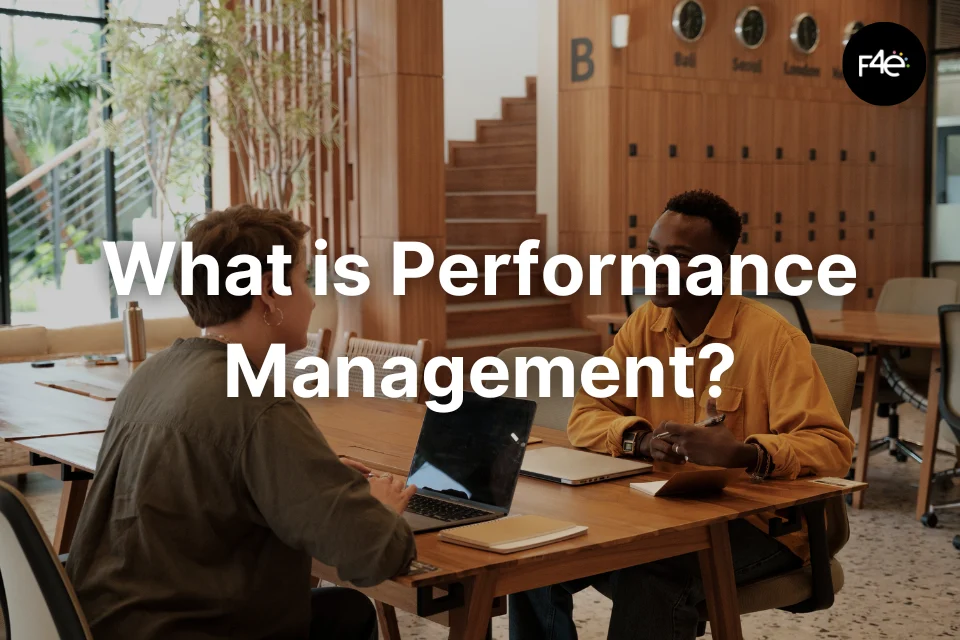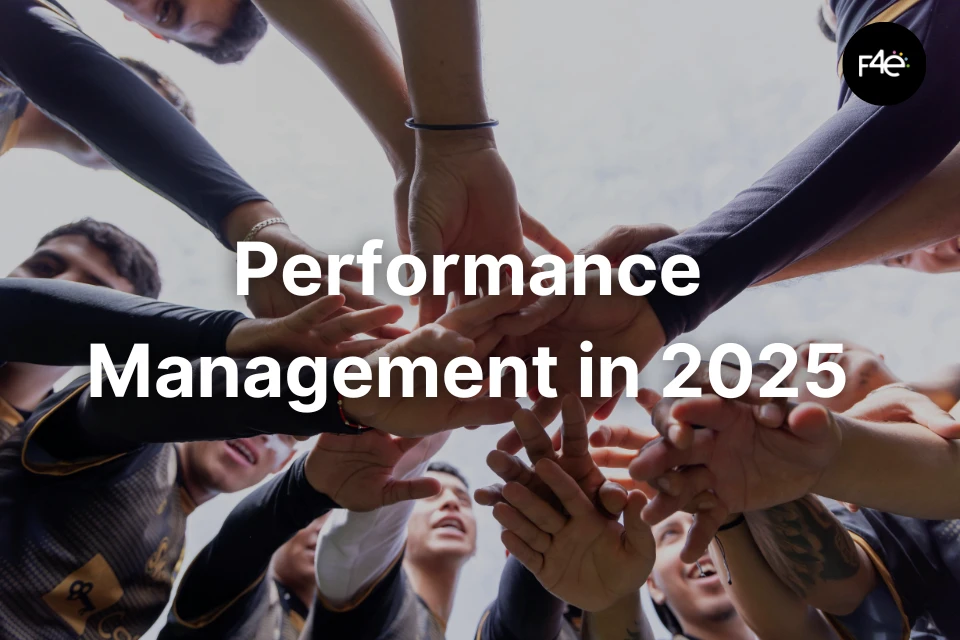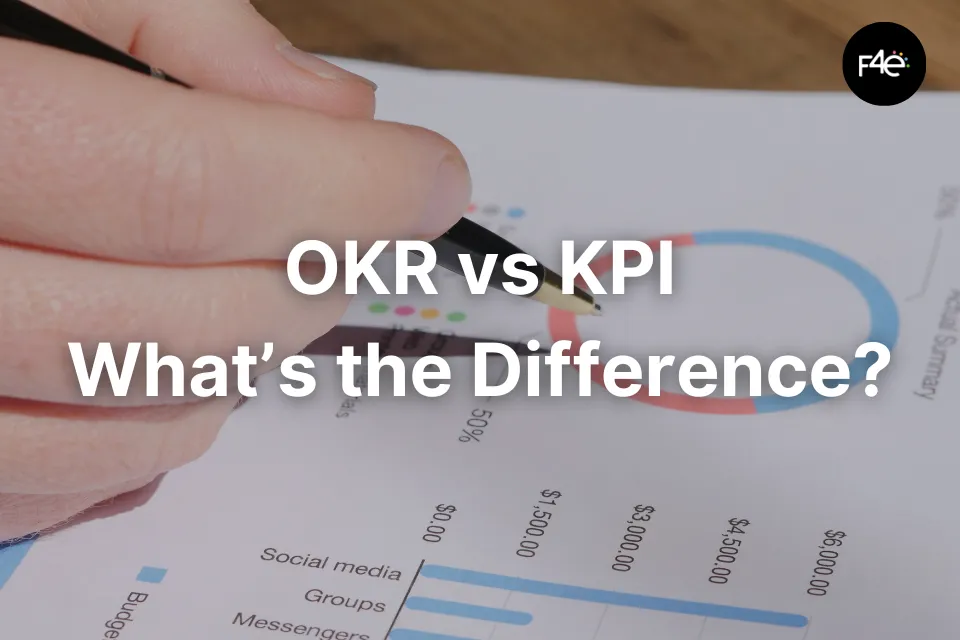Only 2% of Chief Human Resource Officers believe their performance management system is effective (Gallup, 2024). Despite this alarming statistic, performance management remains essential for organizational success. It’s the process of guiding and improving employee performance to meet business goals—and when done right, it transforms both individual contributions and company outcomes.
At its core, performance management helps teams stay focused, managers give timely feedback, and companies adapt quickly to changing needs. It involves setting clear expectations, providing support, and making sure people know how their work connects to the bigger picture.
In modern workplaces, performance management has shifted from a static, top-down evaluation to a more continuous, collaborative process. It’s about clarity, communication, and consistency – not paperwork or checkboxes. Whether it’s through OKRs, weekly 1:1s, or project-based evaluations, the goal is the same: to help people do their best work, and help companies grow with them.
Why it matters
Performance management isn’t just an HR formality – it shapes how people work, grow, and stay engaged. When done right, it helps companies avoid misalignment, catch problems early, and keep teams focused on the right outcomes.
For employees, it means knowing what’s expected, getting regular input, and having space to improve. For managers, it’s a tool to support, not control – giving them structure for feedback, recognition, and coaching. For the business, it’s a way to drive productivity without burning people out or leaving high performers unrecognized.
Without a solid performance management approach, goals drift, feedback gets delayed, and small issues quietly snowball. That’s why companies that treat it as a living process – not a yearly event – tend to have stronger cultures, better retention, and faster adaptation to change.
Main goals of performance management
The purpose of performance management isn’t to micromanage or track output – it’s to create alignment, support growth, and make performance visible in a fair and useful way.
Key Goals:
| Goal | Description |
| Clarity | Set clear expectations so people know what success looks like. |
| Alignment | Ensure individual goals support team and company priorities. |
| Development | Help people grow by identifying strengths and areas to improve. |
| Consistency | Apply standards fairly to reduce bias and build trust. |
| Recognition & Accountability | Reward strong work and address underperformance with transparency. |
Core stages of performance management
Performance management isn’t a one-time event – it’s a cycle. Each stage builds on the next, creating a rhythm of clarity, feedback, and course correction that helps work stay aligned and people stay supported.
The Cycle:
- Goal Setting
Define specific, measurable expectations. Use OKRs, KPIs, or task lists. - Ongoing Feedback and Check-ins
Give regular feedback during 1:1s, after milestones, or casually — not just once a year. - Performance Reviews
Formal reviews should reflect ongoing conversations, not surprises. Use them to highlight progress and set direction. - Recognition and Growth Planning
Discuss next steps, training needs, and areas to improve. Recognize contributions genuinely — not just with promotions.

Common methods and tools
There’s no single way to manage performance — the method should fit the team and the work.
Common Approaches:
- Annual Performance Reviews
Formal, once-a-year evaluations. Easy to standardize but often too slow. - 360-Degree Feedback
Feedback from peers, managers, direct reports. Only works with honesty and psychological safety. - OKRs (Objectives and Key Results)
Track goals and progress, focusing on outcomes. Great for fast-moving teams. - Continuous Feedback Systems
Casual, ongoing check-ins and adjustments. More effort, but more agility. - Performance Management Software
Performance management platforms help track progress, gather insights, and reduce administrative work without adding bureaucracy. F4e’s solution is designed to make feedback and alignment an ongoing process rather than periodic events, embedding performance conversations into your team’s natural workflow.
Many companies mix methods: ongoing feedback + OKRs + lightweight reviews. The key is utility — not bureaucracy.
Roles and responsibilities
Performance management only works when roles are clear and shared across the company.
Who does what:
- HR
Builds the system, trains managers, ensures fairness, tracks outcomes. - Managers
Set goals, give feedback, support growth — they drive the day-to-day quality. - Employees
Own their development. Understand goals, seek feedback, and improve. - Leadership
Set the tone. Model accountability, recognize excellence, and align performance with strategy.
Good practices that actually work
Performance systems often fail because they’re too complicated or disconnected. What works best is simple, consistent, and human.
What to do:
- Set fewer, clearer goals
3–5 goals per person = better focus. - Give feedback while it still matters
Timing is key. Don’t wait. - Use real examples
Tie feedback to actual actions or outcomes. - Make it two-way
Let employees share what’s working and what’s not. - Document enough, not everything
Keep useful notes, but don’t turn it into a paperwork nightmare. - Adjust as you go
Things change. The system should too.
Examples in practice
Seeing performance management in real use makes it easier to grasp.
Scenarios:
- Sales team using OKRs
OKRs focus on acquisition and closures. Progress reviewed biweekly; feedback is tied to both results and soft skills. - Product team using continuous feedback
Sprint retros with peer feedback feed into monthly development check-ins. - Support team blending reviews with recognition
Reviews are light-touch. Metrics + peer input + public recognition = well-rounded. - New hire onboarding with performance check-ins
30-60-90 day check-ins reveal blockers early and track onboarding success.
FAQs
Is performance management the same as performance appraisal?
Not quite. Appraisals are one part. Management is the full cycle.
How often should performance reviews happen?
Once a year isn’t enough. Twice yearly + regular check-ins works better.
What’s the biggest mistake companies make?
Treating it like a task, not a conversation. That kills engagement.
Do you need special software?
No — but software like F4e makes it easier to manage and track as you grow.
Moving forward with effective performance management
Creating a performance management system that drives results while engaging employees requires the right approach and tools. Start by evaluating your current processes against the principles we’ve outlined, then consider how purpose-built solutions might help you implement these practices more effectively.
Ready to transform how your organization handles performance? Book a demo to see how F4e makes continuous performance management simple and effective.








